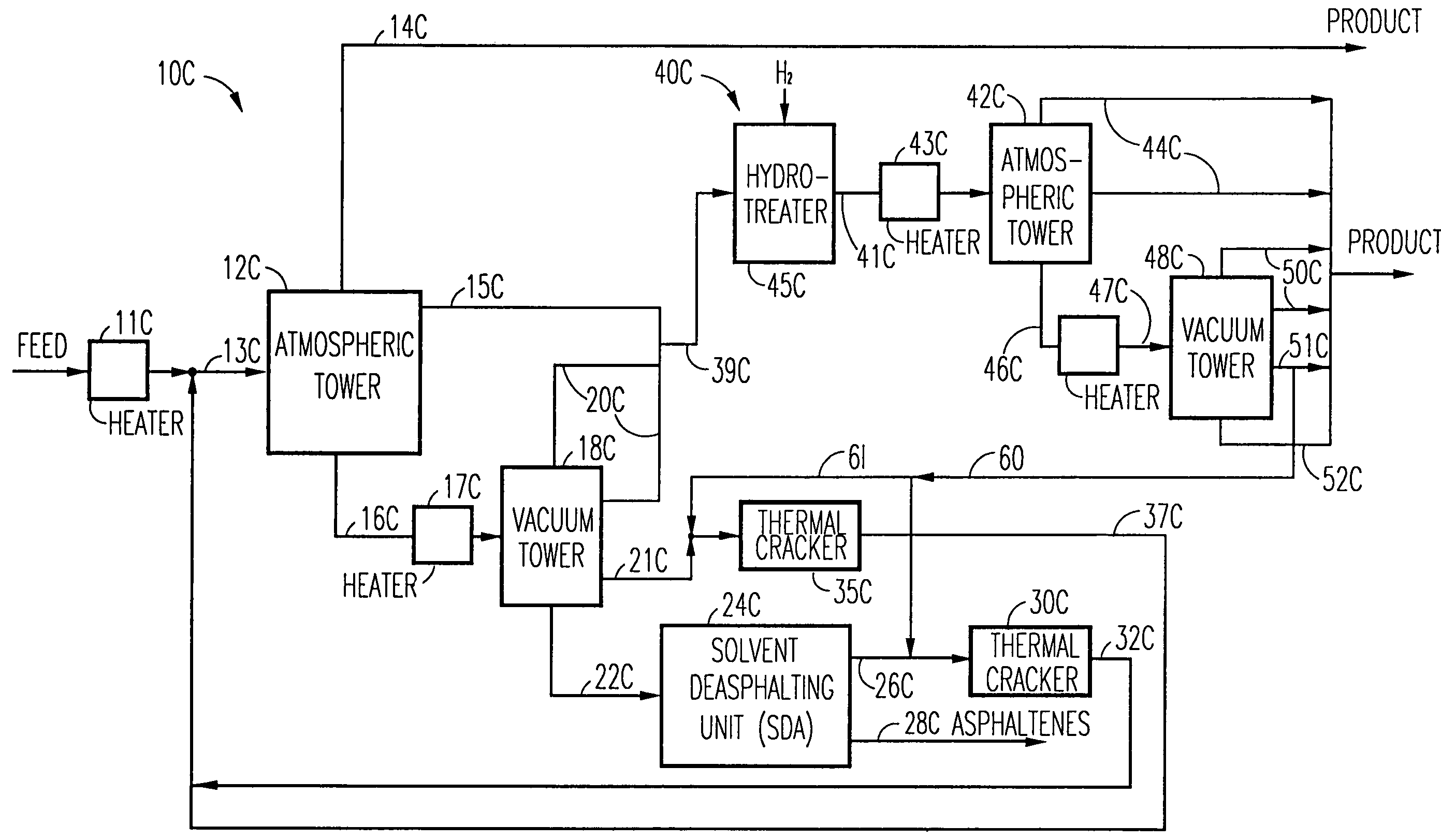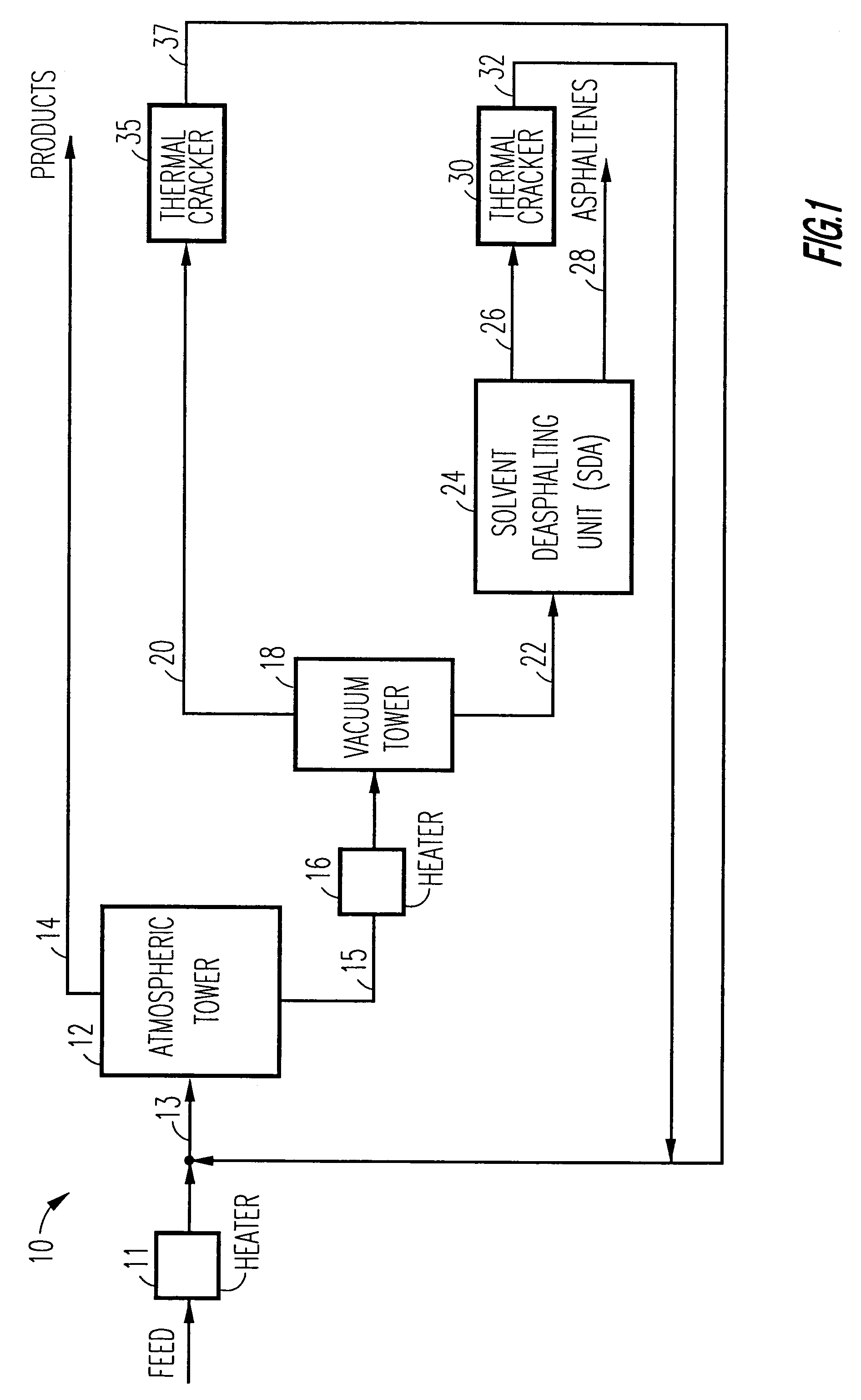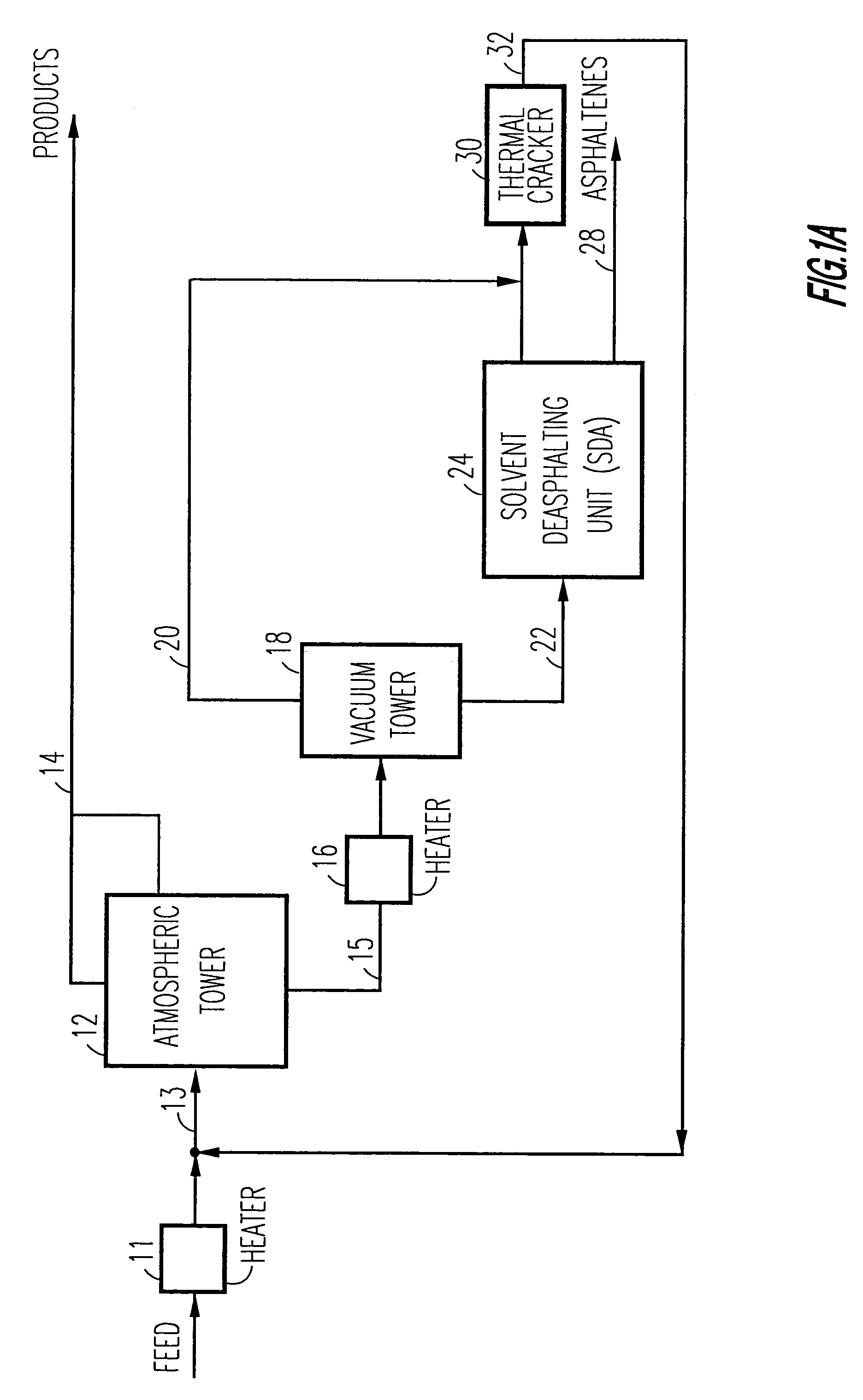Method of and apparatus for processing heavy hydrocarbon feeds
a technology of hydrocarbon feeds and hydrocarbon distillation, which is applied in the direction of hydrocarbon distillation, liquid gas reaction processes, thermal non-catalytic cracking, etc., can solve the problems of increasing the cost of fuel or raw materials for producing other products for users of such fractions, sulfur compounds in non-distillible fractions, and reducing the value of petroleum refiners
- Summary
- Abstract
- Description
- Claims
- Application Information
AI Technical Summary
Benefits of technology
Problems solved by technology
Method used
Image
Examples
Embodiment Construction
[0032]Turning to the drawings, numeral 10 in FIG. 1 designates apparatus for processing heavy hydrocarbons in accordance with the present invention wherein heavy hydrocarbon feed is supplied to heater 11 and the heated heavy hydrocarbon feed is fed to atmospheric fractionating tower 12. Atmospheric fractionating tower 12 produces light atmospheric fractions in line 14 and atmospheric bottoms in line 15. The atmospheric bottoms in line 15 are then supplied to heater 16 and the heated atmospheric bottoms are supplied to vacuum fractionating tower 18 which produces light vacuum fractions in line 20 and vacuum residue in line 22. The vacuum residue in line 22 is then supplied to solvent deasphalting unit 24 which produces deasphalted oil in line 26 and asphaltenes in line 28. Deasphalted oil in line 26 is supplied to thermal cracker 30 that produces thermally cracked product in line 32 that is recycled to inlet 13 of atmospheric fractionating tower 12. Moreover, the light vacuum fractio...
PUM
| Property | Measurement | Unit |
|---|---|---|
| vacuum fractions | aaaaa | aaaaa |
| vacuum fraction | aaaaa | aaaaa |
| concentrations | aaaaa | aaaaa |
Abstract
Description
Claims
Application Information
 Login to View More
Login to View More - R&D
- Intellectual Property
- Life Sciences
- Materials
- Tech Scout
- Unparalleled Data Quality
- Higher Quality Content
- 60% Fewer Hallucinations
Browse by: Latest US Patents, China's latest patents, Technical Efficacy Thesaurus, Application Domain, Technology Topic, Popular Technical Reports.
© 2025 PatSnap. All rights reserved.Legal|Privacy policy|Modern Slavery Act Transparency Statement|Sitemap|About US| Contact US: help@patsnap.com



